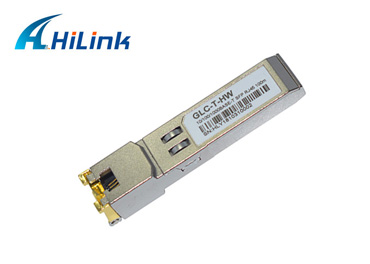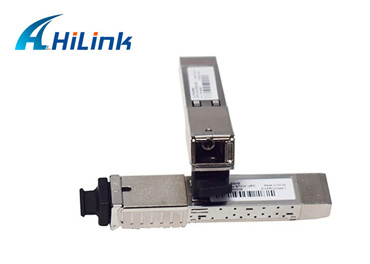What Does SFP Stand for in Networking?
Jan. 16, 2023
Today, the SFP module is still used as an industry standard by manufacturers and suppliers worldwide.20 It has been an industry mainstay in many networks such as SONET, Gigabit Ethernet, Fibre Channel, PON and other communication standards for many years. This guide will explain some tips on SFP modules for beginners.
What is an SFP module?
SFP stands for Small Form Factor Pluggable and is also known as a mini-gbic (gigabit interface converter).
An SFP module is simply a small modular transceiver that plugs into an SFP port on a network switch or server. SFP modules have replaced GBIC modules in most applications due to their small size, allowing them to be used in tight network spaces to provide fast communication between switches and critical network components. Furthermore, SFP transceiver modules are hot-swappable, which makes it easy to adapt existing networks without having to redesign the entire cable infrastructure.
Hilink 100BASE Copper Small Form Pluggable SFP transceiver module is compliant with the SFP MultiSource Agreement (MSA) and IEEE802.3u. With the hot pluggability, the module offers a flexible and easy way to be installed into SFP MSA compliant ports at any time without the interruption of the host equipment operating online. The Copper SFP transceivers use an integrated RJ-45 connector with transformer and PHY IC.
Hilink 100BASE Copper Pluggable SFP Transceiver Module
Choosing SFP copper or fiber modules?
SFP modules are available in various types according to different classification criteria. It is available for copper or fiber optic. On the fiber side, there are singlemode SFP modules and multimode SFP modules, allowing users to choose the right transceiver for the optical range required by their network.
The most common optical transceivers are 850nm wavelengths with up to 550m of multimode fibre and 1310nm wavelengths with up to 20km of Singlemode fibre. Copper-based SFP modules are mainly 1000BASE-T and 1000BASE-TX SFP modules for Gigabit Ethernet networks within 100 meters.
Choose SFP or advanced SFP+?
The most common SFP modules on the market today are 1Gb by transmission speed and include 1000base-T/TX, 1000base-SX, 1000base-LX/LX10, 1000base-BX10, 1000base-LX/LH, 1000base-EX, and 1000base-ZX.
As networks expand and bandwidth demands continue to increase, 10Gb SFP+ modules are becoming increasingly popular. 10Gb SFP, also known as SFP+, is a newer version with faster speeds in the same form factor. In the SFP+ range, you will primarily find SFP+ SR, SFP+ LR, SFP+ ZR modules for 10 Gb Ethernet networks.
GPON SFP with MAC
Can we use SFP hardware in SFP+ slots?
In many cases, SFP+ ports accept SFP fiber, but the speed drops to 1G instead of 10G. However, SFP+ fiber cannot be plugged into SFP ports because SFP+ does not support speeds below 1G. Also, almost all SFP+ ports on Cisco switches can support SFP, but many SFP+ ports on Brocade switches only support SFP+ optical.
Choosing an MSA-compatible SFP?
Compatibility is often the parameter that users are most concerned about when purchasing an MSA SFP module. MSA (Multi-Source Agreement) is a protocol supported by many manufacturers who have come together to collaborate and standardize fit forms and attempt to provide a reliable means of successfully mixing and matching SFP brands. Third-party companies have also developed their own tools to program SFP modules to be compatible with OEMs. As a result, MSA-compatible SFP modules can be used successfully in most networks.













